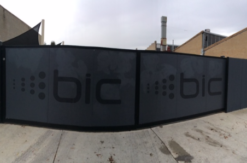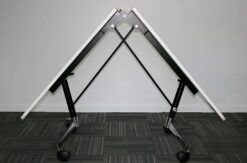Metal fabrication is a critical industry that provides the backbone for countless modern infrastructures and products. From automotive components and architectural frameworks to intricate machinery and consumer goods, metal fabrication solutions play a pivotal role in shaping the world we live in. This blog explores the significance of metal fabrication solutions, the various techniques involved, and their wide-ranging applications.
Understanding Metal Fabrication
Metal fabrication is the process of cutting, bending, and assembling metal materials to create specific structures or components. It encompasses a variety of techniques and technologies that transform raw metal into usable parts and products. These solutions are essential for industries such as construction, automotive, aerospace, manufacturing, and energy, among others.
Key Metal Fabrication Techniques
Cutting: Cutting is the initial step in metal fabrication, involving the separation of metal sheets or bars into desired shapes and sizes. This can be achieved through various methods such as laser cutting, plasma cutting, waterjet cutting, and traditional sawing. Laser cutting is particularly popular due to its precision and ability to handle complex designs.
Bending: Bending is the process of deforming metal to achieve a specific angle or curvature. This is often done using press brakes or rolling machines. Bending is crucial for creating components with specific shapes, such as brackets, frames, and enclosures.
Welding: Welding is the technique of joining two or more metal pieces together by melting their edges and adding a filler material. It is a fundamental process in metal fabrication, essential for constructing large structures, machinery, and vehicles. Various welding methods, including MIG, TIG, and arc welding, are employed depending on the materials and requirements.
Machining: Machining involves removing material from a workpiece to achieve precise dimensions and shapes. This includes processes like milling, turning, and drilling. CNC (Computer Numerical Control) machining has revolutionized the industry by allowing for highly accurate and repeatable production.
Finishing: Finishing processes enhance the appearance and durability of metal products. Techniques such as painting, powder coating, anodizing, and galvanizing protect against corrosion and wear, ensuring that fabricated components last longer and maintain their aesthetic appeal.
Applications of Metal Fabrication Solutions
Construction: In the construction industry, metal fabrication solutions are indispensable for creating structural elements like beams, columns, and trusses. Prefabricated metal components expedite the building process and ensure structural integrity.
Automotive: The automotive sector relies heavily on metal fabrication for producing engine parts, chassis, exhaust systems, and body panels. Precision and durability are paramount to meet safety and performance standards.
Aerospace: Aerospace applications demand high-performance materials and fabrication techniques to create aircraft components, satellite structures, and spacecraft parts. Lightweight and strong materials like aluminum and titanium are often used.
Manufacturing: Metal fabrication is essential in manufacturing machinery, tools, and equipment. Custom fabricated parts are designed to meet specific operational requirements, enhancing efficiency and productivity.
Energy: The energy sector, including oil, gas, and renewable energy, utilizes metal fabrication for constructing pipelines, wind turbine components, and solar panel frames. Robust and reliable fabrication ensures the resilience of critical infrastructure.
In conclusion, metal fabrication solutions are integral to a wide range of industries, providing the essential components and structures that support modern life. The diverse techniques involved in metal fabrication enable the creation of precise, durable, and aesthetically pleasing metal products. As technology advances, metal fabrication continues to evolve, offering innovative solutions that drive progress and meet the ever-changing demands of various sectors.


